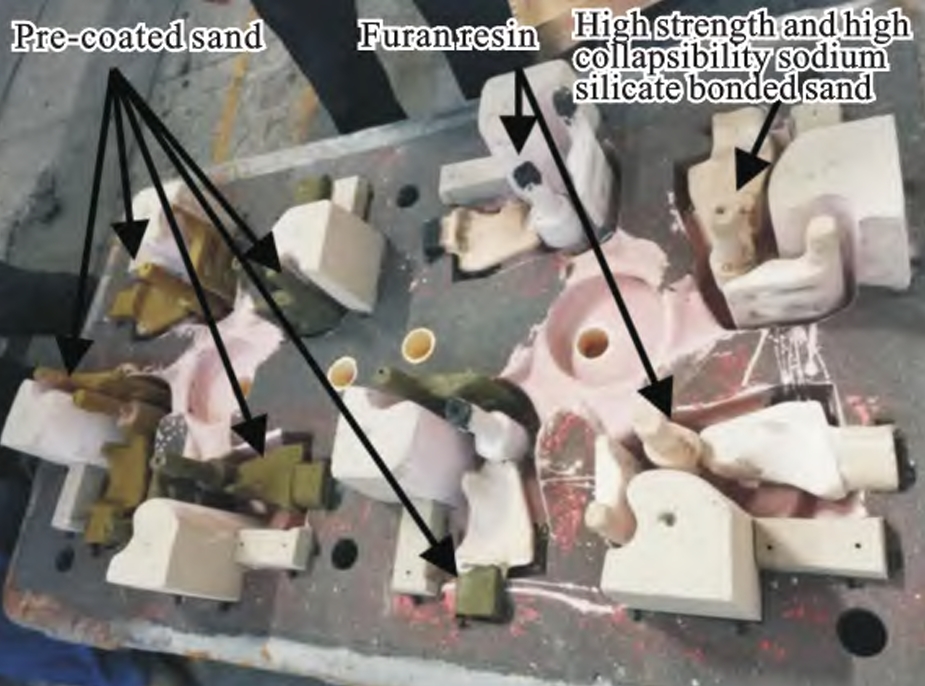Introduction
Lost foam casting (LFC) is an innovative and environmentally friendly casting method that uses polystyrene foam patterns to create metal castings. The foam pattern vaporizes upon contact with molten metal, leaving behind a precise metal casting. This method is gaining popularity due to its green manufacturing process, high precision, low cost, and reduced labor intensity. However, despite its advantages, LFC often suffers from higher defect rates compared to traditional cavity casting, with approximately 80% of defects related to filling issues. This paper explores a testing method to evaluate the filling ability of molten metal in LFC, focusing on the influence of various process parameters.
Factors Influencing Filling Ability in Lost Foam Casting
The filling process in LFC is complex, involving intense physical and chemical reactions between the molten metal and the foam pattern. The foam pattern decomposes rapidly under the heat of the molten metal, generating gases that create a gap between the metal and the pattern. This gap, filled with decomposition products, exerts pressure that significantly affects the filling speed and morphology compared to traditional casting methods.
Key Factors Affecting Filling Ability
- Vacuum Level: The vacuum level in LFC helps maintain the strength of the sand mold and facilitates the removal of decomposition products. Higher vacuum levels generally increase filling speed, but their impact on filling ability is not well-documented. Typical vacuum levels range from 0.03 to 0.06 MPa.
- Pattern Density: Higher pattern density results in more decomposition products per unit volume, increasing resistance to metal flow. Common pattern materials include EPS (20-25 g/L) and STMMA (22-26 g/L).
- Pouring Temperature: The pouring temperature significantly influences the filling speed. Initially, higher temperatures increase the speed, but beyond a certain point, the speed decreases due to changes in the decomposition products. Typical pouring temperatures range from 1480 to 1520°C.
- Coating Permeability: The coating on the foam pattern isolates the metal from the sand mold and affects the filling process. Higher permeability allows for better removal of decomposition products, reducing gas pressure and increasing filling speed. Coating thickness and the number of layers applied influence permeability.
- Static Head Pressure: The height of the sprue determines the static head pressure, which directly affects the filling speed. Higher static head pressure results in faster filling.
Process Parameter Selection
To test the filling ability of molten iron, the following parameters were selected:
- Pouring Temperature: 1400-1500°C
- Vacuum Level: 0.03-0.06 MPa
- Pattern Density: 20-26 g/L
- Coating Permeability: Controlled by the number of coating layers (2-4 layers)
- Static Head Pressure: Varied by adjusting the sprue height
Sample Design and Optimization
To develop a reliable testing method, several sample designs were evaluated to reflect the filling conditions of actual castings and to be sensitive to changes in process parameters.
Initial Sample Design
The initial sample design featured a spiral shape with varying thicknesses (6mm, 8mm, 10mm) and a total length of 2000mm. Tests were conducted under different pouring temperatures and vacuum levels. However, the results showed that all samples were fully filled, indicating that the design was not sensitive enough to parameter changes.
Optimized Sample Design
The optimized sample design reduced the width to 20mm and the thickness to 8mm, with a total length of 1900mm. This design proved more sensitive to changes in pouring temperature and static head pressure, showing varying filling distances under different conditions.
Optimized Sample Structure
| Parameter | Value |
|---|---|
| Maximum Diameter | 400mm |
| Width | 20mm |
| Thickness | 8mm |
| Total Length | 1900mm |
Test Results
| Pouring Temperature | Static Head Pressure | Filling Distance |
|---|---|---|
| 1420°C | Low | 1200mm |
| 1420°C | Medium | 1400mm |
| 1420°C | High | 1600mm |
| 1480°C | Low | 1300mm |
| 1480°C | Medium | 1500mm |
| 1480°C | High | 1700mm |
The results demonstrated that the optimized sample design effectively reflected the influence of process parameters on filling ability.
Mold Design for Sample Production
To improve efficiency and accuracy, a mold was designed for producing the foam patterns. The mold allowed for precise control over pattern density and dimensions, ensuring consistent test conditions.
Mold Design Features
- Anti-Deformation Ribs: Integrated into the mold to prevent deformation and breakage during demolding.
- Length Markings: Spaced at 50mm intervals for easy measurement of filling distance.
- Gating System: Designed to facilitate easy removal after casting.
Mold Design Specifications
| Component | Dimension |
|---|---|
| Sprue Diameter | 40mm |
| Runner Section | 35mm x 30mm |
| Ingate Section | 35mm x 10mm |
Conclusion
The developed testing method, using a spiral sample with a width of 20mm and thickness of 8mm, effectively evaluates the filling ability of molten metal in lost foam casting. This method is sensitive to changes in process parameters, providing valuable data for optimizing casting processes and reducing defect rates. The use of a dedicated mold for sample production ensures consistency and accuracy in testing.

